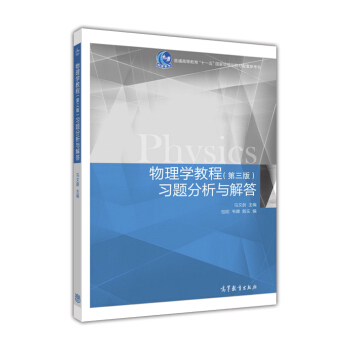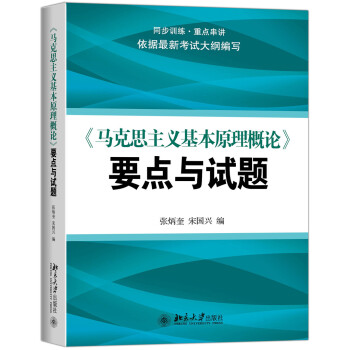![数字图像处理(第三版)(英文版) [Digital Image Processing, Third Ediiton]](https://pic.windowsfront.com/12113248/5877ae0cNe70a7537.jpg)

具体描述
编辑推荐
本书是数字图像处理的经典教材,内容涵盖数字图像基础、灰度变换与空间滤波、频率域滤波、图像复原与重建、彩色图像处理、小波和多分辨率处理、图像压缩、形态学图像处理、图像分割、表示与描述、目标识别等,全球近700所高校采用为教材。
内容简介
本书是关于数字图像处理的经典著作,作者在对32个国家的134所院校和研究所的教师、学生及自学者进行广泛调查的基础上编写了第三版。除保留第二版的大部分主要内容外,还根据收集的建议从13个方面进行了修订,新增了400多幅图像、200多个图表和80多道习题,同时融入了近年来本科学领域的重要发展,使本书具有鲜明的特色与时效性。全书共分12章,包括绪论、数字图像基础、灰度变换与空间滤波、频域滤波、图像复原与重建、彩色图像处理、小波及多分辨率处理、图像压缩、形态学图像处理、图像分割、表现与描述、目标识别。
作者简介
Rafael C. Gonzalez(拉婓尔.冈萨雷斯):美国田纳西大学电气和计算机工程系教授、田纳西大学图像和模式分析实验室、机器人和计算机视觉实验室创始人、IEEE会士,研究领域为模式识别、图像处理和机器人,其著作已被全球范围内的600多所大学和研究所采用。
Richard E. Woods 美国田纳西大学电气工程系博士,IEEE会员。
目录
Preface 15Acknowledgments 19
The Book Web Site 20
About the Authors 21
Chapter 1 Introduction 23
1.1 What Is Digital Image Processing? 23
1.2 The Origins of Digital Image Processing 25
1.3 Examples of Fields that Use Digital Image Processing 29
1.3.1 Gamma-Ray Imaging 30
1.3.2 X-Ray Imaging 31
1.3.3 Imaging in the Ultraviolet Band 33
1.3.4 Imaging in the Visible and Infrared Bands 34
1.3.5 Imaging in the Microwave Band 40
1.3.6 Imaging in the Radio Band 42
1.3.7 Examples in which Other Imaging Modalities Are Used 42
1.4 Fundamental Steps in Digital Image Processing 47
1.5 Components of an Image Processing System 50
Summary 53
References and Further Reading 53
Chapter 2 Digital Image Fundamentals 57
2.1 Elements of Visual Perception 58
2.1.1 Structure of the Human Eye 58
2.1.2 Image Formation in the Eye 60
2.1.3 Brightness Adaptation and Discrimination 61
2.2 Light and the Electromagnetic Spectrum 65
2.3 Image Sensing and Acquisition 68
2.3.1 Image Acquisition Using a Single Sensor 70
2.3.2 Image Acquisition Using Sensor Strips 70
2.3.3 Image Acquisition Using Sensor Arrays 72
2.3.4 A Simple Image Formation Model 72
2.4 Image Sampling and Quantization 74
2.4.1 Basic Concepts in Sampling and Quantization 74
2.4.2 Representing Digital Images 77
2.4.3 Spatial and Intensity Resolution 81
2.4.4 Image Interpolation 87
2.5 Some Basic Relationships between Pixels 90
2.5.1 Neighbors of a Pixel 90
2.5.2 Adjacency, Connectivity, Regions, and Boundaries 90
2.5.3 Distance Measures 93
2.6 An Introduction to the Mathematical Tools Used in Digital Image Processing 94
2.6.1 Array versus Matrix Operations 94
2.6.2 Linear versus Nonlinear Operations 95
2.6.3 Arithmetic Operations 96
2.6.4 Set and Logical Operations 102
2.6.5 Spatial Operations 107
2.6.6 Vector and Matrix Operations 114
2.6.7 Image Transforms 115
2.6.8 Probabilistic Methods 118
Summary 120
References and Further Reading 120
Problems 121
Chapter 3 Intensity Transformations and Spatial Filtering 126
3.1 Background 127
3.1.1 The Basics of Intensity Transformations and Spatial Filtering 127
3.1.2 About the Examples in This Chapter 129
3.2 Some Basic Intensity Transformation Functions 129
3.2.1 Image Negatives 130
3.2.2 Log Transformations 131
3.2.3 Power-Law (Gamma) Transformations 132
3.2.4 Piecewise-Linear Transformation Functions 137
3.3 Histogram Processing 142
3.3.1 Histogram Equalization 144
3.3.2 Histogram Matching (Specification) 150
3.3.3 Local Histogram Processing 161
3.3.4 Using Histogram Statistics for Image Enhancement 161
3.4 Fundamentals of Spatial Filtering 166
3.4.1 The Mechanics of Spatial Filtering 167
3.4.2 Spatial Correlation and Convolution 168
3.4.3 Vector Representation of Linear Filtering 172
3.4.4 Generating Spatial Filter Masks 173
3.5 Smoothing Spatial Filters 174
3.5.1 Smoothing Linear Filters 174
3.5.2 Order-Statistic (Nonlinear) Filters 178
3.6 Sharpening Spatial Filters 179
3.6.1 Foundation 180
3.6.2 Using the Second Derivative for Image Sharpening-The Laplacian 182
3.6.3 Unsharp Masking and Highboost Filtering 184
3.6.4 Using First-Order Derivatives for (Nonlinear) Image Sharpening―The Gradient 187
3.7 Combining Spatial Enhancement Methods 191
3.8 Using Fuzzy Techniques for Intensity Transformations and Spatial Filtering 195
3.8.1 Introduction 195
3.8.2 Principles of Fuzzy Set Theory 196
3.8.3 Using Fuzzy Sets 200
3.8.4 Using Fuzzy Sets for Intensity Transformations 208
3.8.5 Using Fuzzy Sets for Spatial Filtering 211
Summary 214
References and Further Reading 214
Problems 215
Chapter 4 Filtering in the Frequency Domain 221
4.1 Background 222
4.1.1 A Brief History of the Fourier Series and Transform 222
4.1.2 About the Examples in this Chapter 223
4.2 Preliminary Concepts 224
4.2.1 Complex Numbers 224
4.2.2 Fourier Series 225
4.2.3 Impulses and Their Sifting Property 225
4.2.4 The Fourier Transform of Functions of One Continuous Variable 227
4.2.5 Convolution 231
4.3 Sampling and the Fourier Transform of Sampled Functions 233
4.3.1 Sampling 233
4.3.2 The Fourier Transform of Sampled Functions 234
4.3.3 The Sampling Theorem 235
4.3.4 Aliasing 239
4.3.5 Function Reconstruction (Recovery) from Sampled Data 241
4.4 The Discrete Fourier Transform (DFT) of One Variable 242
4.4.1 Obtaining the DFT from the Continuous Transform of a Sampled Function 243
4.4.2 Relationship Between the Sampling and Frequency Intervals 245
4.5 Extension to Functions of Two Variables 247
4.5.1 The 2-D Impulse and Its Sifting Property 247
4.5.2 The 2-D Continuous Fourier Transform Pair 248
4.5.3 Two-Dimensional Sampling and the 2-D Sampling Theorem 249
4.5.4 Aliasing in Images 250
4.5.5 The 2-D Discrete Fourier Transform and Its Inverse 257
4.6 Some Properties of the 2-D Discrete Fourier Transform 258
4.6.1 Relationships Between Spatial and Frequency Intervals 258
4.6.2 Translation and Rotation 258
4.6.3 Periodicity 259
4.6.4 Symmetry Properties 261
4.6.5 Fourier Spectrum and Phase Angle 267
4.6.6 The 2-D Convolution Theorem 271
4.6.7 Summary of 2-D Discrete Fourier Transform Properties 275
4.7 The Basics of Filtering in the Frequency Domain 277
4.7.1 Additional Characteristics of the Frequency Domain 277
4.7.2 Frequency Domain Filtering Fundamentals 279
4.7.3 Summary of Steps for Filtering in the Frequency Domain 285
4.7.4 Correspondence Between Filtering in the Spatial and Frequency Domains 285
4.8 Image Smoothing Using Frequency Domain Filters 291
4.8.1 Ideal Lowpass Filters 291
4.8.2 Butterworth Lowpass Filters 295
4.8.3 Gaussian Lowpass Filters 298
4.8.4 Additional Examples of Lowpass Filtering 299
4.9 Image Sharpening Using Frequency Domain Filters 302
4.9.1 Ideal Highpass Filters 303
4.9.2 Butterworth Highpass Filters 306
4.9.3 Gaussian Highpass Filters 307
4.9.4 The Laplacian in the Frequency Domain 308
4.9.5 Unsharp Masking, Highboost Filtering, and High-Frequency-Emphasis Filtering 310
4.9.6 Homomorphic Filtering 311
4.10 Selective Filtering 316
4.10.1 Bandreject and Bandpass Filters 316
4.10.2 Notch Filters 316
4.11 Implementation 320
4.11.1 Separability of the 2-D DFT 320
4.11.2 Computing the IDFT Using a DFT Algorithm 321
4.11.3 The Fast Fourier Transform (FFT) 321
4.11.4 Some Comments on Filter Design 325
Summary 325
References and Further Reading 326
Problems 326
Chapter 5 Image Restoration and Reconstruction 333
5.1 A Model of the Image Degradation/Restoration Process 334
5.2 Noise Models 335
5.2.1 Spatial and Frequency Properties of Noise 335
5.2.2 Some Important Noise Probability Density Functions 336
5.2.3 Periodic Noise 340
5.2.4 Estimation of Noise Parameters 341
5.3 Restoration in the Presence of Noise Only―Spatial Filtering 344
5.3.1 Mean Filters 344
5.3.2 Order-Statistic Filters 347
5.3.3 Adaptive Filters 352
5.4 Periodic Noise Reduction by Frequency Domain Filtering 357
5.4.1 Bandreject Filters 357
5.4.2 Bandpass Filters 358
5.4.3 Notch Filters 359
5.4.4 Optimum Notch Filtering 360
5.5 Linear, Position-Invariant Degradations 365
5.6 Estimating the Degradation Function 368
5.6.1 Estimation by Image Observation 368
5.6.2 Estimation by Experimentation 369
5.6.3 Estimation by Modeling 369
5.7 Inverse Filtering 373
5.8 Minimum Mean Square Error (Wiener) Filtering 374
5.9 Constrained Least Squares Filtering 379
5.10 Geometric Mean Filter 383
5.11 Image Reconstruction from Projections 384
5.11.1 Introduction 384
5.11.2 Principles of Computed Tomography (CT) 387
5.11.3 Projections and the Radon Transform 390
5.11.4 The Fourier-Slice Theorem 396
5.11.5 Reconstruction Using Parallel-Beam Filtered Backprojections 397
5.11.6 Reconstruction Using Fan-Beam Filtered Backprojections 403
Summary 409
References and Further Reading 410
Problems 411
Chapter 6 Color Image Processing 416
6.1 Color Fundamentals 417
6.2 Color Models 423
6.2.1 The RGB Color Model 424
6.2.2 The CMY and CMYK Color Models 428
6.2.3 The HSI Color Model 429
6.3 Pseudocolor Image Processing 436
6.3.1 Intensity Slicing 437
6.3.2 Intensity to Color Transformations 440
6.4 Basics of Full-Color Image Processing 446
6.5 Color Transformations 448
6.5.1 Formulation 448
6.5.2 Color Complements 452
6.5.3 Color Slicing 453
6.5.4 Tone and Color Corrections 455
6.5.5 Histogram Processing 460
6.6 Smoothing and Sharpening 461
6.6.1 Color Image Smoothing 461
6.6.2 Color Image Sharpening 464
6.7 Image Segmentation Based on Color 465
6.7.1 Segmentation in HSI Color Space 465
6.7.2 Segmentation in RGB Vector Space 467
6.7.3 Color Edge Detection 469
6.8 Noise in Color Images 473
6.9 Color Image Compression 476
Summary 477
References and Further Reading 478
Problems 478
Chapter 7 Wavelets and Multiresolution Processing 483
7.1 Background 484
7.1.1 Image Pyramids 485
7.1.2 Subband Coding 488
7.1.3 The Haar Transform 496
7.2 Multiresolution Expansions 499
7.2.1 Series Expansions 499
7.2.2 Scaling Functions 501
7.2.3 Wavelet Functions 505
7.3 Wavelet Transforms in One Dimension 508
7.3.1 The Wavelet Series Expansions 508
7.3.2 The Discrete Wavelet Transform 510
7.3.3 The Continuous Wavelet Transform 513
7.4 The Fast Wavelet Transform 515
7.5 Wavelet Transforms in Two Dimensions 523
7.6 Wavelet Packets 532
Summary 542
References and Further Reading 542
Problems 543
Chapter 8 Image Compression 547
8.1 Fundamentals 548
8.1.1 Coding Redundancy 550
8.1.2 Spatial and Temporal Redundancy 551
8.1.3 Irrelevant Information 552
8.1.4 Measuring Image Information 553
8.1.5 Fidelity Criteria 556
8.1.6 Image Compression Models 558
8.1.7 Image Formats, Containers, and Compression Standards 560
8.2 Some Basic Compression Methods 564
8.2.1 Huffman Coding 564
8.2.2 Golomb Coding 566
8.2.3 Arithmetic Coding 570
8.2.4 LZW Coding 573
8.2.5 Run-Length Coding 575
8.2.6 Symbol-Based Coding 581
8.2.7 Bit-Plane Coding 584
8.2.8 Block Transform Coding 588
8.2.9 Predictive Coding 606
8.2.10 Wavelet Coding 626
8.3 Digital Image Watermarking 636
Summary 643
References and Further Reading 644
Problems 645
Chapter 9 Morphological Image Processing 649
9.1 Preliminaries 650
9.2 Erosion and Dilation 652
9.2.1 Erosion 653
9.2.2 Dilation 655
9.2.3 Duality 657
9.3 Opening and Closing 657
9.4 The Hit-or-Miss Transformation 662
9.5 Some Basic Morphological Algorithms 664
9.5.1 Boundary Extraction 664
9.5.2 Hole Filling 665
9.5.3 Extraction of Connected Components 667
9.5.4 Convex Hull 669
9.5.5 Thinning 671
9.5.6 Thickening 672
9.5.7 Skeletons 673
9.5.8 Pruning 676
9.5.9 Morphological Reconstruction 678
9.5.10 Summary of Morphological Operations on Binary Images 684
9.6 Gray-Scale Morphology 687
9.6.1 Erosion and Dilation 688
9.6.2 Opening and Closing 690
9.6.3 Some Basic Gray-Scale Morphological Algorithms 692
9.6.4 Gray-Scale Morphological Reconstruction 698
Summary 701
References and Further Reading 701
Problems 702
Chapter 10 Image Segmentation 711
10.1 Fundamentals 712
10.2 Point, Line, and Edge Detection 714
10.2.1 Background 714
10.2.2 Detection of Isolated Points 718
10.2.3 Line Detection 719
10.2.4 Edge Models 722
10.2.5 Basic Edge Detection 728
10.2.6 More Advanced Techniques for Edge Detection 736
10.2.7 Edge Linking and Boundary Detection 747
10.3 Thresholding 760
10.3.1 Foundation 760
10.3.2 Basic Global Thresholding 763
10.3.3 Optimum Global Thresholding Using Otsu’s Method 764
10.3.4 Using Image Smoothing to Improve Global Thresholding 769
10.3.5 Using Edges to Improve Global Thresholding 771
10.3.6 Multiple Thresholds 774
10.3.7 Variable Thresholding 778
10.3.8 Multivariable Thresholding 783
10.4 Region-Based Segmentation 785
10.4.1 Region Growing 785
10.4.2 Region Splitting and Merging 788
10.5 Segmentation Using Morphological Watersheds 791
10.5.1 Background 791
10.5.2 Dam Construction 794
10.5.3 Watershed Segmentation Algorithm 796
10.5.4 The Use of Markers 798
10.6 The Use of Motion in Segmentation 800
10.6.1 Spatial Techniques 800
10.6.2 Frequency Domain Techniques 804
Summary 807
References and Further Reading 807
Problems 809
Chapter 11 Representation and Description 817
11.1 Representation 818
11.1.1 Boundary (Border) Following 818
11.1.2 Chain Codes 820
11.1.3 Polygonal Approximations Using Minimum-Perimeter Polygons 823
11.1.4 Other Polygonal Approximation Approaches 829
11.1.5 Signatures 830
11.1.6 Boundary Segments 832
11.1.7 Skeletons 834
11.2 Boundary Descriptors 837
11.2.1 Some Simple Descriptors 837
11.2.2 Shape Numbers 838
11.2.3 Fourier Descriptors 840
11.2.4 Statistical Moments 843
11.3 Regional Descriptors 844
11.3.1 Some Simple Descriptors 844
11.3.2 Topological Descriptors 845
11.3.3 Texture 849
11.3.4 Moment Invariants 861
11.4 Use of Principal Components for Description 864
11.5 Relational Descriptors 874
Summary 878
References and Further Reading 878
Problems 879
Chapter 12 Object Recognition 883
12.1 Patterns and Pattern Classes 883
12.2 Recognition Based on Decision-Theoretic Methods 888
12.2.1 Matching 888
12.2.2 Optimum Statistical Classifiers 894
12.2.3 Neural Networks 904
12.3 Structural Methods 925
12.3.1 Matching Shape Numbers 925
12.3.2 String Matching 926
Summary 928
References and Further Reading 928
Problems 929
Appendix A 932
Bibliography 937
Index 965
精彩书摘
《数字图像处理(第三版)(英文版)》:Because distances are positive and monotonic, we can work with the distance squared instead, thus avoiding square root computations.However,implementing Eq.(6.7—1) or (6.7—2) is computationally expensive for images of practical size, even if the square roots are not computed.A compromiseis to use a bounding box, as illustrated in Fig.6.43(c).In this approach,the box is centered on a, and its dimensions along each of the color axes is chosen proportional to the standard deviation of the samples along each of the axis.Computation of the standard deviations is done only once using sample color data.
Given an arbitrary color point, we segment it by determining whether or not it is on the surface or inside the box, as with the distance formulations However, determining whether a color point is inside or outside a box is much simpler computationally when compared to a spherical or elliptical enclosure.Note that the preceding discussion is a generalization of the method intro duced in Section 6.5.3 in connection with color slicing.
……
前言/序言
这一版本的《数字图像处理》是本书的一次重要修订。正如由Gonzalez和Wintz编写的1977年版和1988年版及由Gonzalez和Woods编写的1992年版和2002年版那样,这一版本同样是为学生和教师考虑而准备的。本书的主要目的仍是介绍数字图像处理的基本概念和方法,并为读者在该领域进一步学习和研究打下坚实的基础。为实现这一目的,我们仍将重点放在基础知识和普通应用上。本书面向大学高年级本科生和研究生,要求学生修习过数学分析、向量、矩阵、概率、统计、线性系统和计算机编程等方面的课程。为方便读者的学习,本书的配套网站提供了相关的背景材料。
本书在数字图像处理领域处于引领地位30多年的主要原因是,我们对读者的不断变化的教育需求给予了极大的关注。当前版本是在我们不断进行广泛调查的基础上编写的。这些调查涉及32个国家的134所院校和研究机构的教师、学生和自学者。根据调查的结果,本书做了如下修订:
? 书中更早、更全面地介绍了图像处理中所用的数学工具。
? 扩充说明了直方图处理技术。
? 逐步叙述了复杂的算法。
? 扩充说明了空间相关和卷积。
? 介绍了模糊集合理论及其在图像处理中的应用。
? 修订了频率域处理的内容,从基本原理开始,说明了如何从数据取样得出离散傅里叶变换。
? 增加了关于计算机断层(CT)的内容。
? 在关于小波的一章中,清楚地叙述了基本概念。
? 修订了关于数据压缩的章节,包含了更多的视频压缩技术、更新的标准和水印。
? 扩充了形态学的内容,包含了形态学重建,并对灰度形态学进行了修订。
? 扩充了图像分割的内容,包含了更先进的边缘检测技术(如坎尼算法),并从更广的角度探讨了图像的阈值处理。
? 更新了关于图像表示与描述的章节。
? 精简了关于结构目标识别的内容。
尽管在当前版本中添加了新的内容,并对有些内容进行了重组,但我们已尽量在论述的严密性、表示的清晰性和市场调查的反馈之间保持了平衡,同时尽量将篇幅控制在了合理的范围。本书这一版的主要改动如下。
第1章:更新了一些图形,且为了反映后续章节的变化,重写了部分正文。
第2章:本章大约有50%的内容做了修订,包含了新图像和更清晰的说明。主要的修订包括:新增了关于图像插值的一节,以及综述本书所用主要数学工具的一节。替代直接给出枯燥的数学概念,我们借助这一机会将分散在全书中的大量图像处理应用整合到了第2章中。例如,我们把图像平均和图像相减移到了这一章中,以说明其数学运算。这遵循了我们在本书第二版中就开始的做法,即在讨论中尽可能把许多应用前移,这样做的目的是,不仅可以给出应用示例,而且也便于学生掌握基本概念。学完第2章后,读者将会基本了解如何进行数字图像的操作和处理。同时,本章也是其余章节的坚实基础。
第3章:本章的主要修订包括空间相关、卷积及它们在图像滤波中的应用的详细讨论。市场调查表明,读者要求给出一些说明直方图均衡和规定化的数值实例,因此本章增加了几个这样的例子,以说明这些处理工具的机理。市场调查还表明,读者要求了解模糊集合及其在图像处理中的应用范围,故在本章中,我们新增了关于模糊集合理论基础及其在灰度变换和空间滤波中的应用的一节,灰度变换和空间滤波是该理论的两个主要应用。
第4章:过去的4年中,读者抱怨得最多的是,我们在本书第一版和第二版的第4章中做出的改变。我们在当时做出这些改变时,目的是为了简化傅里叶变换和频率域的表示。显然,我们走得太远,本书的许多用户抱怨新内容太肤浅。在当前版本中,我们纠正了这一问题。现在的内容从一个连续变量的傅里叶变换开始,然后从取样和卷积的基本概念进一步推导离散傅里叶变换。这种内容结构的优点是,给出了取样定理的直接推导及其含义。然后,我们将一维情形下的内容推广到二维情形下,给出了许多用于说明数字图像取样效果的例子,包括混叠效应和莫尔图案。再后,我们说明了二维离散傅里叶变换,并且推导和总结了二维离散傅里叶变换的一些重要性质。这些概念是频率域滤波的基础。最后,我们讨论了问题实现,如变换分解和快速傅里叶变换算法的推导。学完本章后,读者将掌握从一维函数的取样到离散傅里叶变换基础的清晰推导及其在数字图像处理中的某些重要应用等内容。
第5章:本章的主要修订是,增加了关于从投影来重建图像的一节,重点在于计算机断层(CT)。CT的讨论以一个直观的例子开始,故读者可更好地理解由投影来重建图像的基本原理,以及实践中使用的各种成像方式。然后,我们推导了雷登变换和傅里叶切片定理,并以它们为基础清楚地说明了滤波反投影的概念。讨论了平行光束和扇形光束重建,并给出了一些例子。这些内容很久之前就已成熟,因此是本书的重要补充。
第6章:本章的修订只限于符号表示的澄清和更正,未增加新的概念。
第7章:许多初学者抱怨说,从前几章过渡到小波章节很困难。为使得内容更为清晰,我们重写了一些基础性章节。
第8章:为了与时俱进,我们完全重写了这一章。主要变化是,给出了新的编码技术,扩充了关于视频的内容,对关于标准的小节进行了修订,增加了关于图像水印处理的介绍。这种新的编排方式可使得初学者更容易掌握本章的内容。
第9章:本章的主要变化是,新增了关于形态学重建的一节,完全修订了关于灰度形态学的一节。通过包含二值图像和灰度图像的形态学重建,可使我们开发出更复杂和更有用的形态学算法。
第10章:对这一章我们也做了较大的修订。该章的结构基本不变,但增加了进一步强调基本原理和探讨先进图像分割技术的新内容。详细讨论并说明了边缘模型,譬如梯度性质。为了说明先进边缘检测技术,包含了Marr-Hildreth边缘检测器和坎尼边缘检测器。此外,我们还重写了关于阈值处理的一节,在该节中纳入了Otsu方法,因为该方法是过去几年中被人们广泛使用的一种最优阈值处理技术。引入这一方法的目的在于,支持基于贝叶斯分类规则的最优阈值处理;该方法不仅易于理解和实现,而且在实践中有相当重要的作用。贝叶斯方法被移到了第12章,这一章详细地讨论了贝叶斯决策规则。此外,我们还就如何利用边缘信息来改进阈值处理做了讨论,并给出了自适应阈值处理的几个新例子。关于形态学分水岭和使用运动进行分割的章节,与上一版相比内容基本相同,但更为简洁。
第11章:本章的主要变化是,包含了一个边界追踪算法,详细推导了一个使用最小周长多边形拟合数字边界的算法,并新增了关于纹理描述的共生矩阵一节。11.2节和11.3节中的许多例子都是新的,11.4节中的所有例子也是新的。
第12章:本章的变化是,包含了关于相关匹配的全新一节,并包含了使用贝叶斯分类器识别多光谱图像中感兴趣区域的一个新例子。关于结构分类的一节现在只限于讨论字符串匹配。
以上提到的所有修订导致了400多幅新图像、200多幅新图表和80多道新习题。在适当的位置,我们以逐步算法的形式小结了复杂的处理过程。同时,更新了所有章节末尾的参考文献。
在本书第二版启动期间建立的配套网站,取得了很大的成功,每月的访问者都在20 000以上。相应于当前版本,我们重新设计和升级了该网站。关于该网站的详细功能和内容,请读者参阅后面的“本书网站”和“致谢”部分。
这一版本反映了2002年以来读者已经变化了的教育需求。像往常那样,书稿完成后数字图像领域仍在继续发展。自1977年第一次问世以来,该书在世界范围内被广泛接受的原因之一是,本书一直强调基本概念,包括试图提供尽快引出知识主体的稳定方法。在本书这一版的编写过程中,我们遵循了相同的原则。
Rafael C. Gonzalez
Richard E. Woods
用户评价
这本《数字图像处理》简直是一座宝藏。我之前一直觉得,图像处理就像一个黑箱子,输入一些数据,然后输出一些处理过的结果,但具体的过程和原理却十分模糊。这本书彻底改变了我的看法。它像一位经验丰富的向导,带领我一步一步地深入图像处理的“森林”。我尤其惊叹于作者对图像变换的讲解。从离散傅立叶变换(DFT)到离散余弦变换(DCT),再到小波变换,书中对每一种变换的数学原理、计算方法和应用场景都进行了详尽的阐述。我记得在学习傅立叶变换时,书中通过生动的二维图像示例,让我看到了图像在频域的表现,以及如何通过滤波来去除高频噪声或增强边缘。这比单纯的公式推导要直观得多。此外,关于图像分割的内容也让我受益匪浅。从阈值法、边缘检测,到区域生长、分水岭算法,书中都给出了清晰的解释和伪代码,让我能够理解每种方法的逻辑。我尤其喜欢书中关于图像特征提取和描述的部分,例如SIFT、SURF等算法的介绍,让我看到了如何从图像中提取具有鲁棒性的关键点,这对于目标识别和图像匹配至关重要。这本书让我不仅学到了“怎么做”,更学到了“为什么这么做”,这种深度和广度是我在其他地方难以找到的。
评分一本真正改变了我对视觉世界认知的著作。在接触这本书之前,“数字图像处理”对我来说,不过是一些模糊的概念,关于像素、滤波器,以及一些似乎遥不可及的算法。然而,当手指翻过那厚实的封面,触碰到油墨的质感,我便知道,自己即将踏上一段深度探索的旅程。作者以一种令人惊叹的清晰度和严谨性,将这个复杂而迷人的领域徐徐展开。从最基础的图像采集和量化,到梯度、边缘检测的精妙之处,再到傅立叶变换在频率域的强大应用,每一个概念都经过层层剥茧,逻辑清晰,深入浅出。我尤其欣赏作者在讲解每一个算法时,不仅提供了数学上的严谨推导,还辅以直观的几何解释和实际应用场景。这使得我能够真正理解为何这些算法有效,以及它们在现实世界中扮演的角色。例如,在讲解直方图均衡化时,书中不仅仅给出了公式,还通过生动的图例展示了不同光照条件下图像的对比度如何被有效增强,这对于我理解图像增强的原理起到了至关重要的作用。再比如,关于图像分割的部分,从区域增长到Watershed算法,书中详细阐述了它们的优缺点以及适用的场景,让我得以窥见如何从纷繁的像素点中“提取”出有意义的物体。每一次阅读,都像是在解锁一个全新的视角,让我对那些习以为常的图像背后隐藏的数学和工程之美有了更深的敬畏。这本书就像一位循循善诱的良师,它不只是传递知识,更是点燃了我对这个领域持久的热情。
评分这本书简直是一本为我量身定做的指南。我在学习数字图像处理的过程中,经常会遇到一些看似高深的概念,但这本书总是能以一种清晰、直观的方式将它们呈现出来。我尤其喜欢书中关于图像变换的章节,它不仅仅是简单地介绍傅立叶变换,而是深入探讨了其在图像处理中的各种应用,比如滤波、去噪等。作者通过大量的图示和实例,将抽象的数学概念转化为生动的视觉效果,让我更容易理解。再比如,关于图像分割的部分,书中详细介绍了各种分割技术,从阈值法到基于区域的方法,再到更复杂的边缘检测和图论方法,让我看到了如何从图像中提取出有意义的区域。我尤其对书中关于形态学处理的讲解印象深刻,它让我了解了腐蚀、膨胀等操作如何用于图像的预处理和特征提取。这些内容不仅理论扎实,而且非常实用,能够直接应用于实际的图像处理任务。这本书的深度和广度都超出了我的预期,它让我对数字图像处理有了全新的认识。
评分我一直对如何让计算机“看懂”图像充满好奇,而这本书为我打开了一扇通往这个领域的大门。它不仅仅是一本讲解算法的书,更是一本阐述“思维方式”的书。我尤其被书中关于图像变换的内容所吸引。例如,对傅立叶变换的解释,作者不仅仅给出了数学公式,还用非常形象的比喻和图例,说明了图像在频域中的表现,以及如何通过对频域的分析来理解图像的结构和纹理。这让我第一次真正理解了“滤波”的本质。此外,关于图像分割的部分,也让我看到了如何将一张充满像素的图像分解成有意义的区域。从简单的阈值分割,到更复杂的区域生长法和分水岭算法,书中都进行了深入的剖析,让我能够理解不同方法的原理和优劣。我尤其喜欢书中关于形态学图像处理的章节,它让我了解了腐蚀、膨胀、开运算、闭运算等操作,以及它们在去除噪声、连接断裂的物体等方面的强大作用。这些操作虽然看似简单,但却蕴含着深刻的几何思想。这本书让我不仅掌握了处理图像的技巧,更重要的是,它培养了我从更深层次理解图像和视觉信息的视角。
评分难以置信,这本《数字图像处理》竟然能将如此抽象的数学概念与生动的视觉效果完美融合。我之前尝试过一些关于图像处理的入门材料,但往往在理解傅立叶变换、小波变换等核心理论时感到力不从心,那些充斥着符号和公式的推导让我望而却步。然而,这本书完全打破了我的困境。作者似乎拥有一种独特的“翻译”能力,能够将高深的数学原理转化为我能够理解的语言,并通过大量精心设计的图示来具象化这些概念。当我读到关于滤波器设计的部分时,书中对不同核(kernel)的形状和其在空间域和频率域的响应的详细分析,让我豁然开朗。特别是当他们介绍高斯滤波器、拉普拉斯算子等时,我不仅看到了数学公式,还看到了它们如何在图像上产生平滑或锐化的效果,这种“所见即所得”的学习体验,是我在其他任何书籍中都未曾有过的。我尤其喜欢书中关于图像复原的部分,噪声模型、退化模型,以及各种去模糊和去噪算法的介绍,让我深刻理解了现实世界中图像失真的原因以及如何与之对抗。从最简单的均值滤波和中值滤波,到更复杂的维纳滤波和盲去卷积,书中都给出了详细的算法描述和性能评估,让我能够批判性地思考不同方法的适用性。这本书不仅仅是一本教科书,更是一本引人入胜的探索指南,它激励我去深入思考,去尝试,去创造。
评分作为一名对计算机视觉充满热情的研究生,我在寻找一本能够扎实打下理论基础的著作,而《数字图像处理》(第三版)完全满足了我的需求。它以一种极其系统和全面的方式,阐述了这个领域的方方面面。我尤其被书中关于图像特征提取和描述的部分所吸引。例如,书中对SIFT、SURF等经典特征提取算法的详细讲解,让我能够理解它们是如何从图像中检测出具有鲁棒性的关键点,以及如何为这些关键点生成描述符。这对于后续的图像匹配、目标识别等任务至关重要。此外,关于图像配准的章节也让我受益匪浅。它详细介绍了各种配准方法,从基于特征的配准到基于区域的配准,以及它们在不同场景下的应用。书中对每种方法的数学原理和实现细节的阐述都极为到位,让我能够真正理解其内在逻辑。我还可以感觉到,作者在撰写这本书时,不仅关注理论的严谨性,也注重算法的实际可操作性。这本书无疑是我在数字图像处理学习道路上最重要的参考文献之一。
评分每次翻开这本书,我都感觉像是在进入一个全新的世界,一个由像素、算法和数学构成的奇妙世界。作者以一种令人难以置信的清晰度,将数字图像处理的复杂性一一呈现。我尤其欣赏书中关于图像增强的章节,它不仅仅是简单地罗列一些增强算法,而是深入剖析了不同算法背后的原理和适用场景。例如,在讲解灰度变换时,书中对幂律变换、分段线性变换等进行了详细的数学分析和图示说明,让我理解了如何通过这些变换来调整图像的对比度和亮度。再者,关于图像复原的部分,让我深刻理解了现实世界中图像失真的根源,例如运动模糊、聚焦模糊等,并介绍了各种复杂的复原技术,如逆滤波、维纳滤波等,让我看到了如何“挽救”那些失真的图像。书中对这些算法的推导过程严谨而又易于理解,让我能够真正掌握它们。我特别喜欢书中关于颜色图像处理的章节,它让我了解了不同的颜色空间(如RGB、HSV、YCbCr)的特性以及它们在图像处理中的应用,这对于理解彩色图像的本质至关重要。这本书不仅仅是一本技术手册,更是一本引人入胜的探索之旅,它让我对视觉信息有了更深刻的理解。
评分坦白说,在我翻开这本书之前,我曾以为自己对图像处理已经有了基本的了解。然而,这本书让我意识到,我之前的认识是多么的片面和肤浅。作者以一种极其宏观和深刻的视角,重新审视了数字图像处理的每一个环节。我尤其对书中关于图像几何变换的部分印象深刻。不仅仅是简单的平移、旋转、缩放,书中还深入探讨了投影变换、仿射变换等更复杂的变换,以及它们在图像校正、配准等领域的关键作用。作者通过详尽的数学推导和直观的几何解释,让我明白了这些变换的本质。同时,书中对图像复原和重建的讲解也让我大开眼界。从点扩散函数(PSF)的建模,到各种逆滤波、最小均方误差滤波,再到最大似然估计和马尔可夫随机场(MRF)的应用,让我看到了图像修复和增强的无限可能性。我特别喜欢书中关于图像编码和压缩的章节,它让我了解了JPEG、MPEG等标准背后的原理,理解了如何在保证视觉效果的前提下,最大程度地减小图像文件的大小。这种对细节的极致追求和对原理的深入剖析,让我对这个领域产生了前所未有的兴趣。
评分作为一名多年的计算机视觉研究者,我一直在寻找一本能够真正引领我深入理解数字图像处理底层原理的著作。市面上充斥着各种浅尝辄止的教程和过于侧重应用的工具书,但真正能够让我扎实掌握理论基础,并能举一反三的,却寥寥无几。《数字图像处理》(第三版)则完全不同。它提供了一个极其系统和全面的视角,从基础的图像形成过程,到复杂的图像分析和理解技术,无所不包。我特别欣赏作者在描述图像增强和复原技术时,所展现出的深刻洞察力。例如,在讲解同态滤波时,书中不仅给出了滤波器的数学形式,还详细分析了它如何同时处理图像的亮度分量和纹理分量,对于改善光照不均的图像效果显著。此外,关于图像分割的章节,从经典的阈值法、区域增长法,到更具挑战性的图割(Graph Cuts)和深度学习方法(虽然我还没来得及深入阅读这部分,但其引言就已让我充满期待),都进行了深入的探讨。书中对每种方法的原理、优缺点以及适用范围的阐述,都极具深度和启发性。我可以感受到作者在编写这本书时,不仅仅是在罗列算法,而是在构建一个完整的知识体系,让读者能够真正理解图像处理的“道”与“术”。
评分在数字图像处理这个领域,一本好的参考书至关重要,而《数字图像处理》(第三版)无疑是其中的佼佼者。它以一种极其系统和全面的方式,涵盖了这个领域的核心知识。我尤其被书中对图像增强和复原技术的讲解所吸引。作者不仅仅列出了各种算法,而是深入探讨了每种算法背后的数学原理和物理意义。例如,在讲解图像复原时,书中对点扩散函数(PSF)的建模和各种去模糊算法的推导,都进行了详尽的阐述,让我能够深刻理解这些算法是如何工作的。我记得特别深刻的是关于维纳滤波的讲解,作者通过对信噪比的分析,解释了维纳滤波如何在噪声和模糊之间取得最佳平衡。此外,书中关于图像压缩的部分也让我受益匪浅。它不仅介绍了JPEG、MPEG等常用压缩标准,还深入剖析了它们背后的离散余弦变换(DCT)等核心技术,让我理解了如何高效地存储和传输图像。这本书就像一位经验丰富的向导,引领我穿越数字图像处理的迷宫,并让我最终掌握了通往各个角落的地图。
评分书的印刷质量还可以,虽然不是原装进口的原版书,但是英文版的确比中文版要更合适。
评分为什么书没有塑封呢,书内容不错,不过买了好久也没开始看,中文的也买了一本,先看中文吧
评分好
评分字迹看着还好,但是书记有难闻气味
评分书有点旧 没包装 但是纸质很好 印刷清晰
评分还可以,挺不错,送货快.。
评分数字图像处理经典著作,英文版值得一读。
评分书是不错,就是用塑料袋装了送过来的,边角有些磕碰。
评分感觉纸质没有中文版的好
相关图书
本站所有内容均为互联网搜索引擎提供的公开搜索信息,本站不存储任何数据与内容,任何内容与数据均与本站无关,如有需要请联系相关搜索引擎包括但不限于百度,google,bing,sogou 等,本站所有链接都为正版商品购买链接。
© 2025 windowsfront.com All Rights Reserved. 静流书站 版权所有

![[二手] 高等数学(第六版)第6版上下册+习题全解指南 全套4本 pdf epub mobi 电子书 下载](https://pic.windowsfront.com/14502652053/5ac097d1N74698308.png)





![培生书系·学前教育精品译丛 美国幼儿教育课程实践指南(原书第9版) [A Practical Guide to Early Childhood Curriculum] pdf epub mobi 电子书 下载](https://pic.windowsfront.com/11789275/5655a209Nf450463c.jpg)




![走进电世界——电气工程与自动化 专业 概论(第二版)/“十二五”普通高等教育本科国家级规划教材 [Understanding the Fundamentals of Electrictty Introduction to Electrical Engineering and Automation] pdf epub mobi 电子书 下载](https://pic.windowsfront.com/11760444/55e501b9N0f272331.jpg)



![肿瘤学概论/十二五普通高等教育本科国家级规划教材 [An Introduction to Oncology] pdf epub mobi 电子书 下载](https://pic.windowsfront.com/11290451/53c4ecbaNb86559da.jpg)



